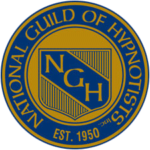
Whole Brain states
Binaural beats
A binaural beat is an auditory illusion perceived when two different pure-tone sine waves, both with frequencies lower than 1500 Hz, with less than a 40 Hz difference between them, are presented to a listener dichotically (one through each ear).[1] For example, if a 530 Hz pure tone is presented to a subject’s right ear, while a 520 Hz pure tone is presented to the subject’s left ear, the listener will perceive the auditory illusion of a third tone, in addition to the two pure-tones presented to each ear. The third sound is called a binaural beat, and in this example would have a perceived pitch correlating to a frequency of 10 Hz, that being the difference between the 530 Hz and 520 Hz pure tones presented to each ear.[2]
The term ‘binaural’ literally signifies ‘to hear with two ears ‘, and was introduced in 1859 to signify the practice of listening to the same sound through both ears, or to two discrete sounds, one through each ear. It was not until 1916 that Carl Stumpf (1848-1936), a German philosopher and psychologist, distinguished between dichotic listening, which refers to the stimulation of each ear with a different stimulus, and diotic listening, the simultaneous stimulation of both ears with the same stimulus.[3][4]
Later, it would be become apparent that binaural hearing, whether dichotic or diotic, is the means by which the geolocation and direction of a sound is determined.[5][6]
Scientific consideration of binaural hearing began before the phenomenon was so named, with the ideas articulated in 1792 by William Charles Wells (1757–1817), a Scottish-American printer, and physician at Saint Thomas’ Hospital, London. Wells sought to theoretically examine and explain aspects of human hearing, including the way in which listening with two ears rather than one might affect the perception of sound, which proceeded from his research into binocular vision.[7][8]
Subsequently, between 1776 and 1802, Giovanni Battista Venturi (1746 – 1822), an Italian physicist, savant, man of letters, diplomat, and historian of science, conducted and described a series of experiments intended to elucidate the nature of binaural hearing.[9][10][11][12] It was in an appendix to a monograph on color that Venturi described experiments on auditory localization using one or two ears, concluding that “the inequality of the two impressions, which are perceived at the same time by both ears, determines the correct direction of the sound.”
Other significant historic investigations into binaural hearing include those of Charles Wheatstone (1802–1875), an English scientist, whose many inventions included the concertina and the stereoscope, Ernst Heinrich Weber (1795–1878), a German physician cited as one of the founders of experimental psychology; and August Seebeck (1805–1849), a scientist at the Technische Universität, Dresden, remembered for his work on sound and hearing. Like Wells, these researchers attempted to compare and contrast what would become known as binaural hearing with the principles of binocular integration generally, and binocular color mixing specifically. They found that binocular vision did not follow the laws of combination of colors from different bands of the spectrum. Rather, it was found that when presenting a different color to each eye, they did not combine, but often competed for perceptual attention.[18][19][20][21]
Meanwhile, of Wheatstone conducted experiments in which he presented a different tuning fork to each ear, stating:
It is well known, that when two consonant sounds are heard together, a third sound results from the coincidences of their vibrations; and that this third sound, which is called the grave harmonic, is always equal to unity, when the two primitive sounds are represented by the lowest integral numbers. This being premised, select two tuning-forks the sounds of which differ by any consonant interval excepting the octave; place the broad sides of their branches, while in vibration, close to one ear, in such a manner that they shall nearly touch at the acoustic axis; the resulting grave harmonic will then be strongly audible, combined with the two other sounds; place afterwards one fork to each ear, and the consonance will be heard much richer in volume, but no audible indications whatever of the third sound will be perceived.[22] 22- Wheatstone, C., Experiments on audition, Quarterly Journal of Science, Literature and Art, Vol. 24, 1827, pp67-72.
—
Cortical Oscillation and Electroencephalography (EEG)
The activity of neurons generate electric currents; and the synchronous action of neural ensembles in the cerebral cortex, comprising large numbers of neurons, produce macroscopic oscillations, which can be monitored and graphically documented by an electroencephalogram (EEG). The electroencephalographic representations of those oscillations are typically denoted by the term ‘brainwaves’ in common parlance.[38][39]
Neural oscillations are rhythmic or repetitive electrochemical activity in the brain and central nervous system. Such oscillations can be characterized by their frequency, amplitude and phase. Neural tissue can generate oscillatory activity driven by mechanisms within individual neurons, as well as by interactions between them. They may also adjust frequency to synchronize with the periodicity of an external acoustic or visual stimuli.[40]
The technique of recording neural electrical activity within the brain from electrochemical readings taken from the scalp originated with the experiments of Richard Caton in 1875, whose findings were developed into electroencephalography (EEG) by Hans Berger in the late 1920s.
Frequency bands of cortical neural ensembles
The fluctuating frequency of oscillations generated by the synchronous activity of cortical neurons, measurable with an electroencephalogram (EEG), via electrodes attached to the scalp, are conveniently categorized into general bands, in order of decreasing frequency, measured in Hertz (Hz) as follows:[41][42]
Gamma, 30 to 50 Hz
Beta, 14 to 30 Hz
Alpha, 8 to 14 Hz
Theta, 4 to 8 Hz
Delta, 0.1 to 4 Hz
In addition, three further wave forms are often delineated in electroencephalographic studies:
Mu, 8 to 12 Hz
Sigma (sleep spindle), 1
2 to 14 Hz
SMR (Sensory motor rhythm), 12.5 to 15.5 Hz[43]
It was Berger who first described the frequency bands Delta, Theta, Alpha, and Beta.
Neurophysiological origin of binaural beat perception
Binaural-beat perception originates in the inferior colliculus of the midbrain and the superior olivary complex of the brainstem, where auditory signals from each ear are integrated and precipitate electrical impulses along neural pathways through the reticular formation up the midbrain to the thalamus, auditory cortex, and other cortical regions.[44][45][46][47]
Neural oscillations and mental state
Following the technique of measuring such brainwaves by Berger, there has remained a ubiquitous consensus that electroencephalogram (EEG) readings depict brainwave wave form patterns that alter over time, and correlate with the aspects of the subject’s mental and emotional state, mental status, and degree of consciousness and vigilance.[48][49][50] It is therefore now established and accepted that discreet electroencephalogram (EEG) measurements, including frequency and amplitude of neural oscillations, correlate with different perceptual, motor and cognitive states.[51][52][53][54][55][56][57][58][59][60][61]
Furthermore, brainwaves alter in response to changes in environmental stimuli, including sound and music; and while the degree and nature of alteration is partially dependent on individual perception, such that the same stimulus may precipitate differing changes in neural oscillations and correlating electroencephalogram (EEG) readings in different subjects, the frequency of cortical neural oscillations, as measured by the EEG, has also been shown to synchronize with or entrain to that of an external acoustic or photic stimulus, with accompanying alterations in cognitive and emotional state. This process is called neuronal entrainment or brainwave entrainment.
Entrainment
—
Brainwave entrainment
Brainwave synchronization
Brainwave entrainment, or ‘neural entrainment’, refers to the capacity of the brain to naturally synchronize its brainwave frequencies with the rhythm of periodic external stimuli, most commonly auditory, visual, or tactile. Brainwave entrainment technologies are used to induce various brain states, such as relaxation or sleep, by creating stimuli that occur at regular, periodic intervals to mimic electrical cycles of the brain during the desired states, thereby “training” the brain to consciously alter states. Recurrent acoustic frequencies, flickering lights, or tactile vibrations are the most common examples of stimuli applied to generate different sensory responses.
Neural oscillation and electroencephalography (EEG)
Main article: Neural oscillation
Neural oscillations are rhythmic or repetitive electrochemical activity in the brain and central nervous system. Such oscillations can be characterized by their frequency, amplitude and phase. Neural tissue can generate oscillatory activity driven by mechanisms within individual neurons, as well as by interactions between them. They may also adjust frequency to synchronize with the periodic vibration of external acoustic or visual stimuli.[1]
The activity of neurons generate electric currents; and the synchronous action of neural ensembles in the cerebral cortex, comprising large numbers of neurons, produce macroscopic oscillations. These phenomena can be monitored and graphically documented by an electroencephalogram (EEG). The electroencephalographic representations of those oscillations are typically denoted by the term ‘brainwaves’ in common parlance.[2][3]
The technique of recording neural electrical activity within the brain from electrochemical readings taken from the scalp originated with the experiments of Richard Caton in 1875, whose findings were developed into electroencephalography (EEG) by Hans Berger in the late 1920s.
Frequency bands of cortical neural ensembles
The fluctuating frequency of oscillations generated by the synchronous activity of cortical neurons, measurable with an electroencephalogram (EEG), via electrodes attached to the scalp, are conveniently categorized into general bands, in order of decreasing frequency, measured in Hertz (HZ) as follows:[4][5]
Gamma, 30 to 50 Hz
Beta, 14 to 30 Hz
Alpha, 8 to 14 Hz
Theta, 4 to 8 Hz
Delta, 0.1 to 4 Hz
In addition, three further wave forms are often delineated in electroencephalographic studies:
Mu, 8 to 12 Hz
Sigma (sleep spindle), 12 to 14 Hz
Sensorimotor rhythm (SMR), 12.5 to 15.5 Hz[6]
It was Berger who first described the frequency bands Delta, Theta, Alpha, and Beta.
Neural oscillation and cognitive functions
The functional role of neural oscillations is still not fully understood;[7] however they have been shown to correlate with emotional responses, motor control, and a number of cognitive functions including information transfer, perception, and memory.[8][9][10] Specifically, neural oscillations, in particular theta activity, are extensively linked to memory function, and coupling between theta and gamma activity is considered to be vital for memory functions, including episodic memory.[11][12][13]
Hemi-Sync®
Hemi-Sync is a trademarked brand name for a patented process, it stands for Hemispheric Synchronization, also known as brainwave synchronization, it relies on the creation of audio patterns containing binaural beats. The technique involves using sound waves to entrain brain waves
Replicated, double-blind, randomized trials on anesthetized patients have found Hemi-Sync effective as a partial replacement for fentanyl during surgery.[7][8]
Holosync® Meditation Technology: Brain Wave Training for …
www.centerpointe.com/
Life Flow®
1- US Patent 3884218: “Method of inducing and maintaining various stages of sleep in the human being” http://www.freepatentsonline.com/3884218.html
2- US Patent 5213562: “Method of inducing mental, emotional and physical states of consciousness, including specific mental activity, in human beings” http://www.freepatentsonline.com/5213562.html
3- US Patent 5356368: “Method of and apparatus for inducing desired states of consciousness” http://www.freepatentsonline.com/5356368.html
7- Kliempt P, Ruta D, Ogston S, Landeck A, Martay K (August 1999). “Hemispheric-synchronisation during anaesthesia: a double-blind randomised trial using audiotapes for intra-operative nociception control”. Anaesthesia. 54 (8): 769–73. doi:10.1046/j.1365-2044.1999.00958.x. PMID 10460529.
8- Lewis AK, Osborn IP, Roth R (February 2004). “The effect of hemispheric synchronization on intraoperative analgesia”. Anesthesia and Analgesia. 98 (2): 533–6, table of contents. http://www.anesthesia-analgesia.org/cgi/pmidlookup?view=long&pmid=14742401
https://en.wikipedia.org
Discover Holosync® and experience this free demo that gives you a clearer mind, better health, more happiness and peace of mind. Try it right now!
“I tried Holosync® and I was floored! This is exactly what I was looking for—not only that, but the sounds are so accommodating to what I like to hear when I .
Hemi-Sync® and Holosync® and Brainwave Optimization®







